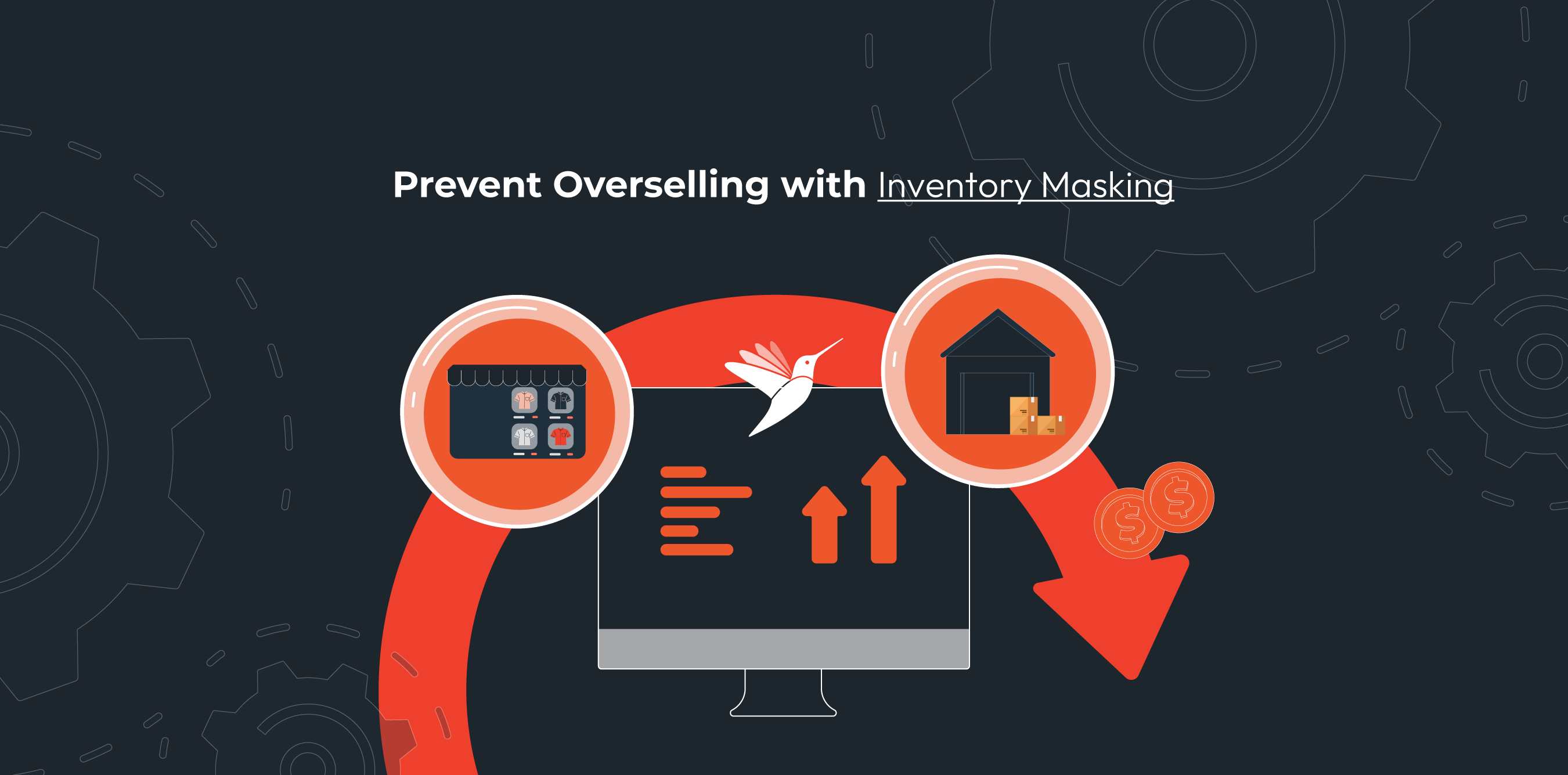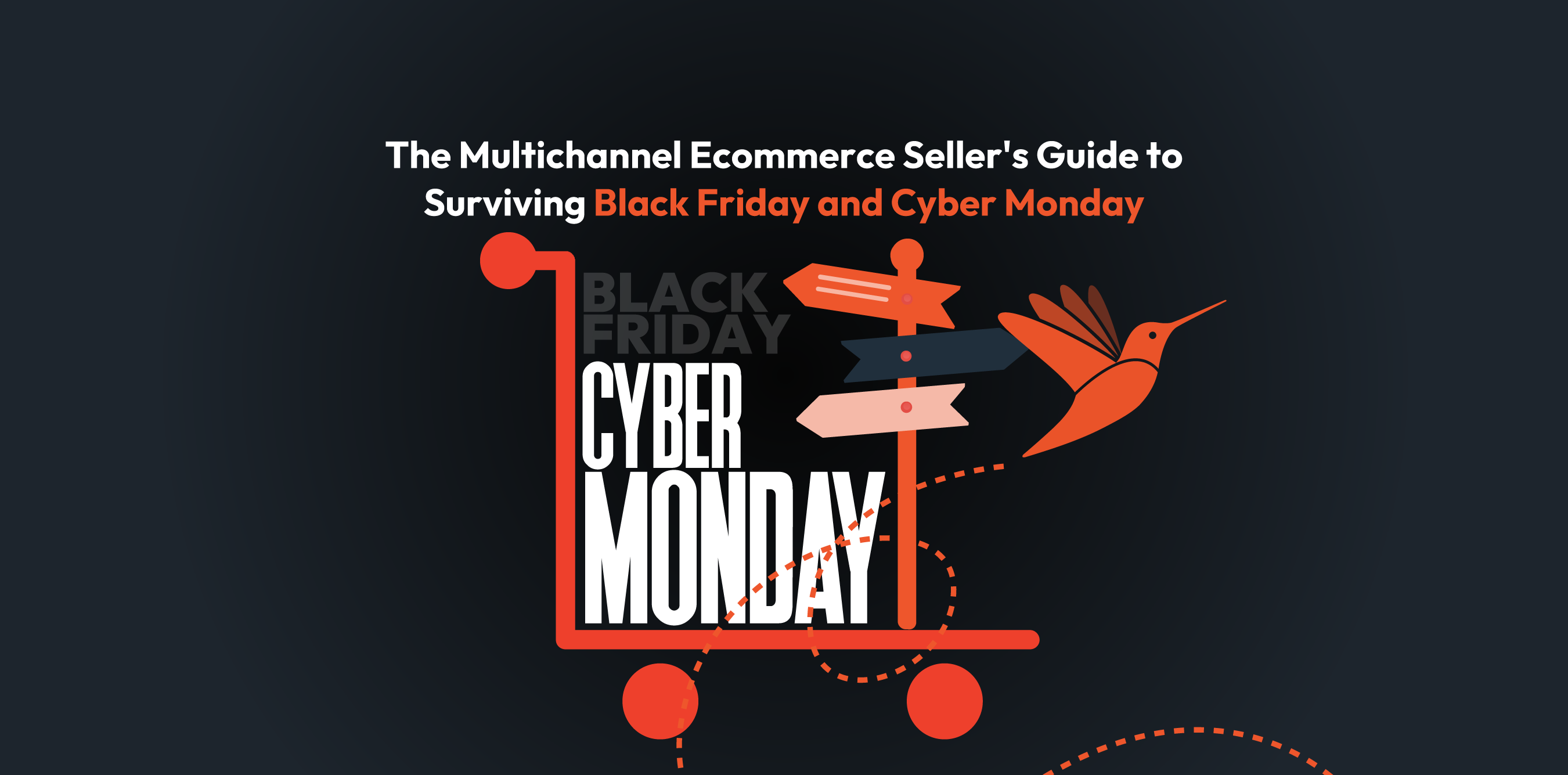Black Friday/Cyber Monday (BFCM) isn't just a sales opportunity; it's a stress test for your entire operation. When orders spike, the small inefficiencies you tolerate today become failures tomorrow. You can’t stop the growth, but you can control the chaos. Here are the four biggest multichannel challenges ecommerce sellers face during the holiday rush, and the best practices for tactical survival to overcome them without switching software this month.
Challenge #1: The Inventory Time Bomb: Overselling
- The Problem: Your 15-minute inventory sync interval is a slow-motion disaster waiting to happen. You may receive 10 orders per second on the busiest day. Items sell out on Etsy, but your Amazon listing is still live, leading to a canceled order and a policy violation.
-
The Buffer Strategy: Immediately increase your stock buffer on your highest-traffic channels. If you have 10 units, only list 7. It's better to miss three sales than to cancel ten orders.
-
Prioritize Sync: Identify your highest-volume items and commit to manually checking their stock levels every 30 minutes, regardless of what your current system shows.
-
SKU Discipline: Before the rush, ensure every single product has a unique, consistent SKU across all marketplaces to prevent miscommunication between your channels.
-
StoreAutomator Solution: Inventory Masking

Within StoreAutomator, the Masking Quantity setting specifies the maximum quantity of the item sent to the channel, regardless of whether more are in stock. This feature lets you automate inventory levels and stay within listing limits for products across different sales channels.
Challenge #2: Multichannel Listing Management (Wasting time on manual data adjustments)
- The Problem: Product Listings are your BFCM Sales Team. Are they ready? Every marketplace (Amazon, Walmart, eBay) requires slightly different data, images, or attribute values. Stop adjusting data manually. Manually updating sale prices or descriptions across five sites is a recipe for error and inconsistency.
- The "Master Template" Mindset: Before you push any BFCM discounts live, commit to a single source of truth for your product information. Treat your primary database (e.g., your shopping cart, ERP, or your multichannel listing software) as the single source of truth. Every other channel is simply a translation.
- Audit for Broken Links/Images: Run a quick audit the week before Black Friday. A broken image or bad link can instantly kill a high-intent shopper’s confidence.
- Pre-Schedule Price Reverts: If your current tool supports it, pre-schedule all price changes to revert automatically according to the BCFM schedule. Do not rely on a human being to hit the pricing field for each product.
- The "Master Template" Mindset: Before you push any BFCM discounts live, commit to a single source of truth for your product information. Treat your primary database (e.g., your shopping cart, ERP, or your multichannel listing software) as the single source of truth. Every other channel is simply a translation.
StoreAutomator Solution: Product Data Templates, Title and Description Templates, Rule-Based Pricing
Templates and Mapping: Templates can be used to display your data in different formatted shapes by replacing, merging, rephrasing, or reformatting. StoreAutomator uses default templates for mapping your internal data fields to the channel’s required target fields. This feature lets you define your formatting rules once for each marketplace. You save countless hours previously spent on manual copy-pasting and character-counting. It ensures your Amazon title structure is perfect and your eBay description is compliant, all automatically, freeing up your team to focus on optimizing performance, not correcting errors.
Pricing Rules and Repricer: StoreAutomator’s pricing features not only automate BFCM price drops and reverts, but also keep you competitively priced in real time without risking your bottom line. Automated pricing tools let you create layered minimum price rules that prevent you from selling below cost + fees. You can write rules like: "If competitor price is lower, match it, but under no circumstance go below [Product.Cost] multiplied by 1.25."

There are three levels of product pricing control in StoreAutomator: inventory level, channel level, and channel item level. Your pricing adapts to the marketplace and your inventory. Advanced rules allow you to:
- Control by Channel: Apply a 15% discount to Amazon US items only, while keeping Amazon UK prices unchanged.
- Control by Inventory Level: Protect low-stock items (increase Min Price when stock < 5) or liquidate overstock (deepen discounts when stock > 50).
- Win the Buy Box: By using StoreAutomator repricer, your prices automatically adjust within your safety range to maximize your chances of securing the Buy Box, even while you sleep.
Challenge #3: Order Fulfillment and Shipping Speed
- The Problem: Orders flood in from five different channels. Your fulfillment team is jumping between dashboards, manually pulling data, and entering tracking numbers, wasting time that should be spent packing.
- The Fix (Operational Efficiency):
- The Unified View: Even if you can’t fully integrate, designate one place (your shipping software or a master spreadsheet) as the central order queue. Pull all raw data into this queue first.
- Batch Processing: Commit to processing orders in batches by channel and shipping service to save time on label setup.
- Communication is King: Use automated shipping confirmation and tracking emails. Customers are forgiving of delays if they feel informed.
StoreAutomator Solution: Order Routing - Automating Your Escape Route for Next Year
.png?width=2701&height=1335&name=Store-Automator-bfcm%20(1).png)
Surviving this BFCM demands manual effort, but scaling sustainably requires automation. The key to solving the fulfillment bottleneck is automating where, when, and how your orders are sent to your warehouse or a partner.
For most multi-channel sellers, this involves implementing advanced Order Routing logic that removes manual sorting and allocation. StoreAutomator’s Order Management module offers the following features:
- Seamless 3PL/MCF Integration (Multi-Channel Fulfillment):
Benefit: Immediately route orders from all your sales channels directly to your chosen fulfillment partner, whether that’s your 3PL (Third-Party Logistics provider), FBA (Fulfillment by Amazon) via their MCF (Multi-Channel Fulfillment) service, or even directly to a supplier for dropshipping. This single-point routing eliminates human error and drastically speeds up the time from click to ship. - Location-Based Routing for Speed and Cost:
Benefit: Optimize every shipment based on your own customizable rules. You can set rules like: "Route all orders to the fulfillment location that offers the lowest shipping cost to the customer's region," or "Route orders in the Northeast US to our secondary warehouse for faster delivery." This advanced, location-based regional routing reduces costs and transit times without manual intervention. - Unified Order Management:
Benefit: Centralize your entire fulfillment pipeline. Orders from all channels flow into a single dashboard, are automatically routed, and the tracking information is pushed back to the correct marketplace. Your focus shifts from managing spreadsheets to managing exceptions.
Challenge #4: Post-BFCM Strategy (Did You Really Profit)
- The Problem: You have four spreadsheets from four channels, and you can't answer the question: "Which channel was actually the most profitable after all fees, discounts, and returns?" You can't strategically plan without unified data.
- The Fix (Analysis Prep):
- Cost-of-Goods Tracking: Ensure your COGS is accurately applied to every order.
- The Channel-by-Channel Review: After the dust settles, compare gross margins across Amazon, Target+, eBay, and other channels. This reveals which channel deserves more ad spend next year.
StoreAutomator Solution: Advanced Multichannel Ecommerce Analytics
StoreAutomator’s Advanced Analytics solution, which combines sales, costs, and inventory data across all marketplaces, automates your data collection and analysis. Turn the BFCM data flood into the precise intelligence needed for long-term growth.
.png?width=2701&height=1335&name=Store-Automator-anlytics%20(1).png)
- True Profit Identification:
Immediately move beyond top-line revenue. By centralizing data, you can see Gross Margin and True Profit by Channel, identifying which channel brings you the most profit. This clarity would be the foundation for smart budget allocation. - Performance Deep Dive:
Gain actionable insights into what truly drives your business. Advanced analytics allow you to generate tailored reports on:- Best Sellers and Underperformers across marketplaces.
- Channel Performance: where your customers are coming from, and how much they spend
- Brand and Category Performance: Which products deserve more stock and more marketing budget
- Future Forecasting Confidence:
Replace gut feeling with a data-driven strategy. By understanding exactly what worked and what didn't this year, you can forecast inventory needs, set profit targets, and confidently plan your campaigns for next year's holiday season, turning a data batch into a clear growth strategy.

